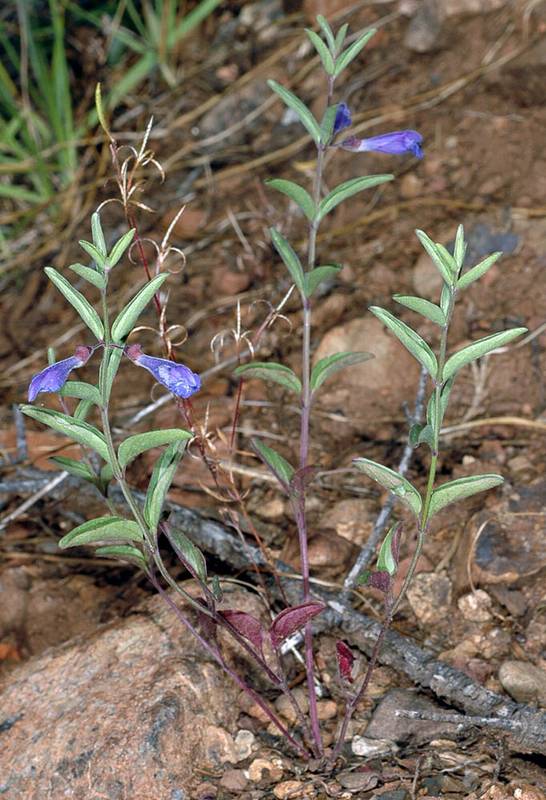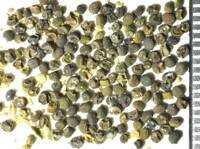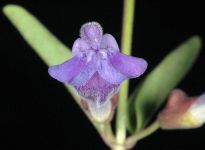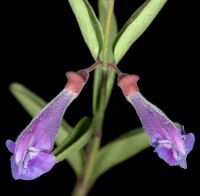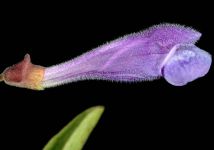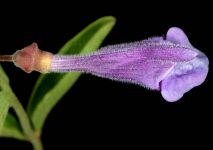Distribution: Scattered locations on both sides of the Cascades in Washington; south to California, east to central Idaho and Utah.
Habitat: A variety of open, moist or dry, often rocky habitats, from the lowlands to moderate elevations in the mountains.
Flowers: June-July
Growth Duration: Perennial
Conservation Status: Not of concern
Pollination: Bumblebees, bees, hummingbirds
Perennial herbs from rhizomes, 1-3 dm. tall, the slender, erect stems often clustered or branched from the base, variously pubescent, but the hairs usually upward-pointing.
Leaves opposite, short-petiolate, the blades entire, 3- to 5-nerved from near the base, lance-elliptic to oblong, 1.5-2.5 cm. long and 3-10 mm. wide, rounded at the apex.
Flowers solitary in the axils of slightly reduced leaves; calyx two-lipped, the upper lip with a prominent transverse appendage, 3.5-5.5 mm. long; corolla two-lipped, deep blue-violet, 15-18 mm. long, the throat nearly closed, the upper lip hood-like, the lower 3-lobed, spreading, the center lobe large and wide, the lateral lobes attached to the upper lip; stamens 4, the lower pair longer than the upper and with one of the pollen sacs abortive; style 2-parted; ovary 2-celled, superior.
Nutlets 4
PNW Herbaria: Specimen records of Scutellaria antirrhinoides in the Consortium of Pacific Northwest Herbaria database
WA Flora Checklist: Scutellaria antirrhinoides checklist entry
OregonFlora: Scutellaria antirrhinoides information
E-Flora BC: Scutellaria antirrhinoides atlas page
CalPhotos: Scutellaria antirrhinoides photos


